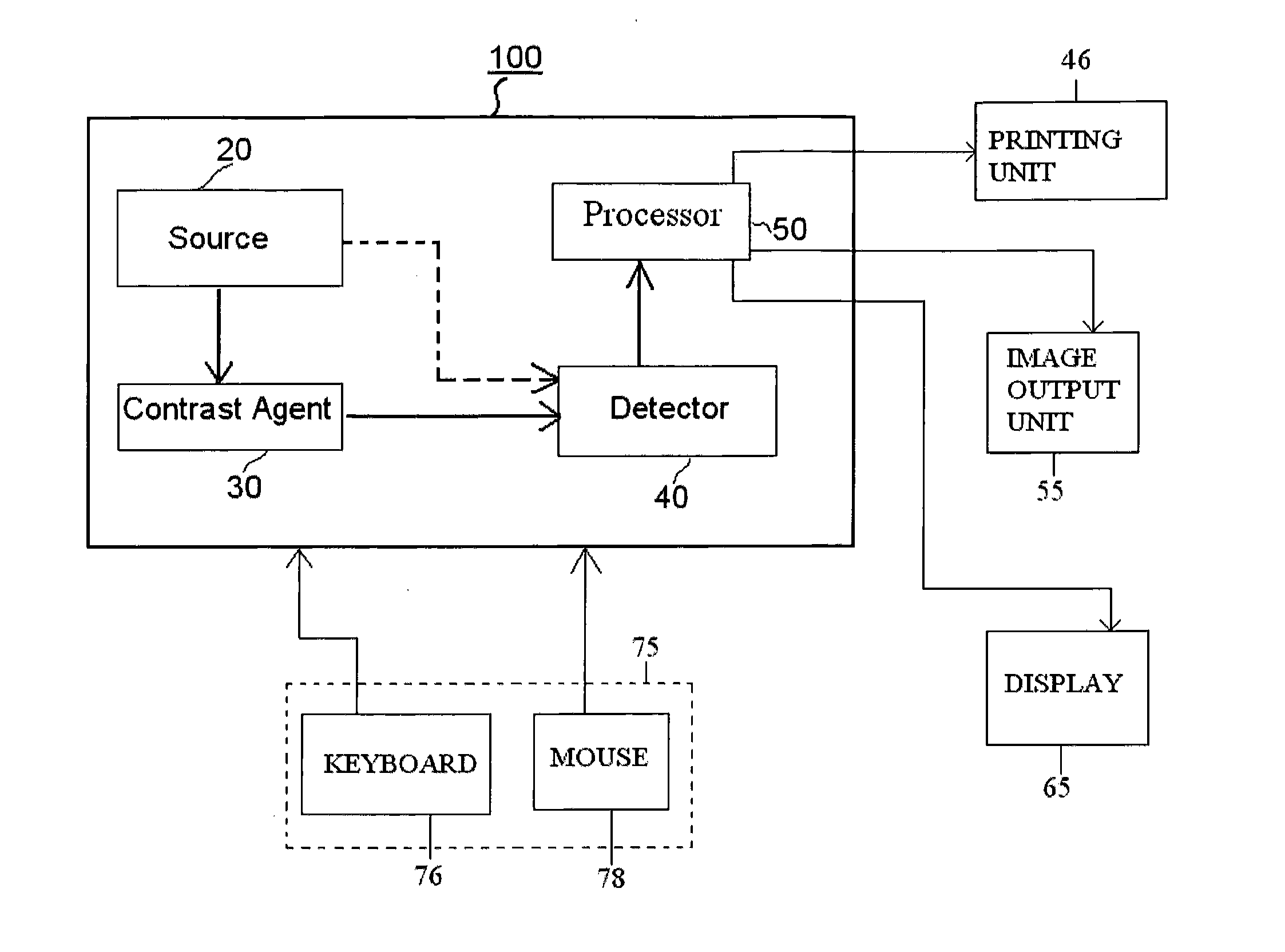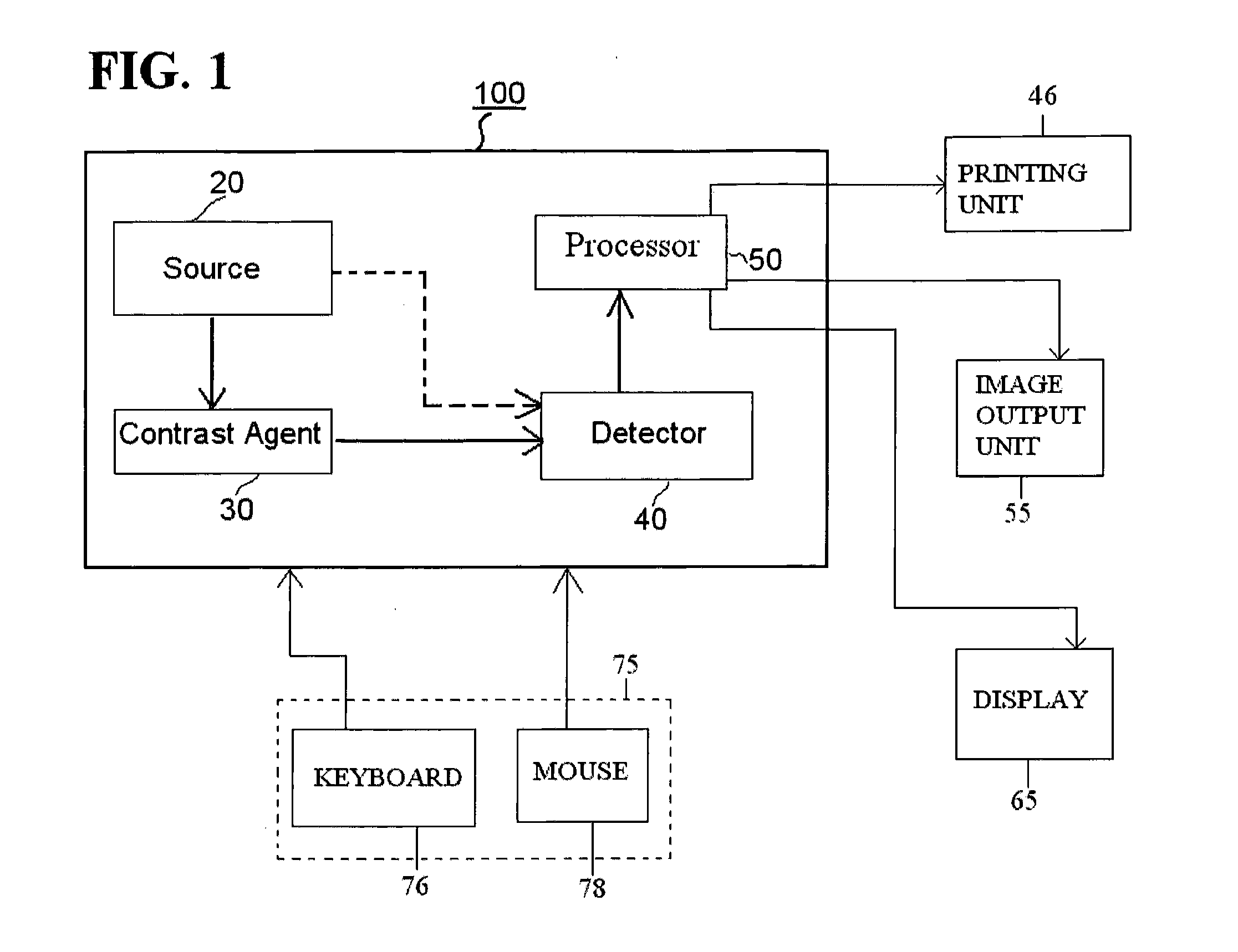Portable bio-magnetic imager and method
a bio-magnetic imager and portable technology, applied in the field of bio-magnetic imaging, can solve the problems of undiagnosed mild to moderate tbi, the gcs is a manual approach, and the likelihood of soldiers returning from combat to remain significant problems,
- Summary
- Abstract
- Description
- Claims
- Application Information
AI Technical Summary
Benefits of technology
Problems solved by technology
Method used
Image
Examples
Embodiment Construction
[0030]Aspects of the invention are more specifically set forth in the accompanying description with reference to the appended figures. FIG. 1 is a general block diagram of a Portable Bio-Magnetic Imager 100 according to an embodiment of the present invention. The system 100 illustrated in FIG. 1 includes the following components: a magnetic field source 20; a contrast agent 30; a magnetic field detector 40 and processor 50. Operation of the system 100 in FIG. 1 will become apparent from the following discussion.
[0031]The magnetic field source 20 generates electromagnetic radiation or an electromagnetic field which is applied to a region containing a contrast agent 30. The source 20 may be a permanent magnet coil, or some other device which produces a magnetic field through an electrical, magnetic, mechanic or other type(s) / combinations of mechanism(s).
[0032]The contrast agent 30 is applied to a subject (for example, a human) for detection of a signature of a certain type of anatomic...
PUM
 Login to View More
Login to View More Abstract
Description
Claims
Application Information
 Login to View More
Login to View More - R&D
- Intellectual Property
- Life Sciences
- Materials
- Tech Scout
- Unparalleled Data Quality
- Higher Quality Content
- 60% Fewer Hallucinations
Browse by: Latest US Patents, China's latest patents, Technical Efficacy Thesaurus, Application Domain, Technology Topic, Popular Technical Reports.
© 2025 PatSnap. All rights reserved.Legal|Privacy policy|Modern Slavery Act Transparency Statement|Sitemap|About US| Contact US: help@patsnap.com



